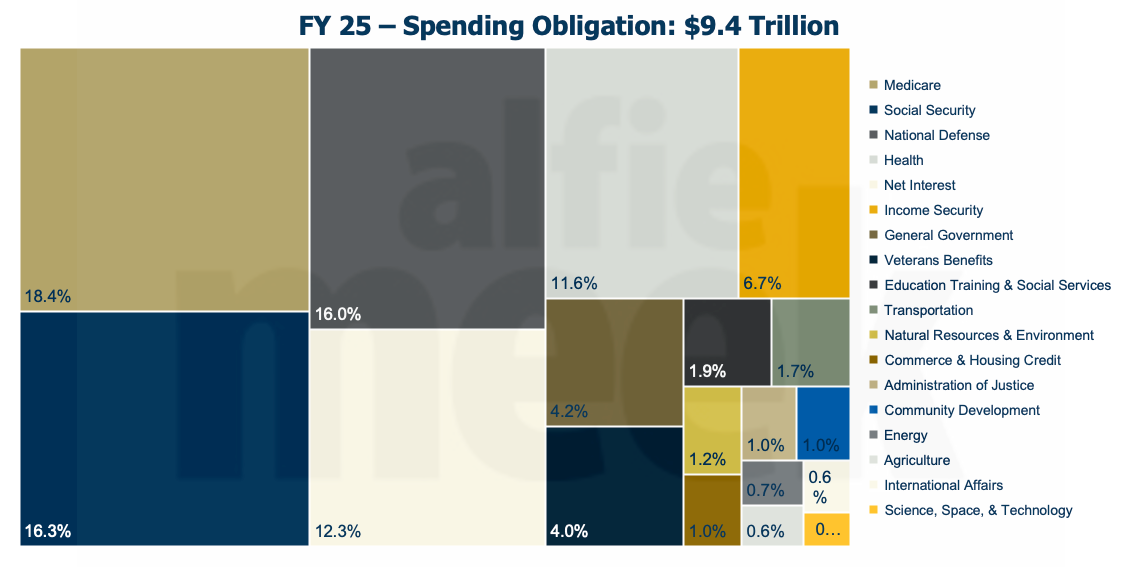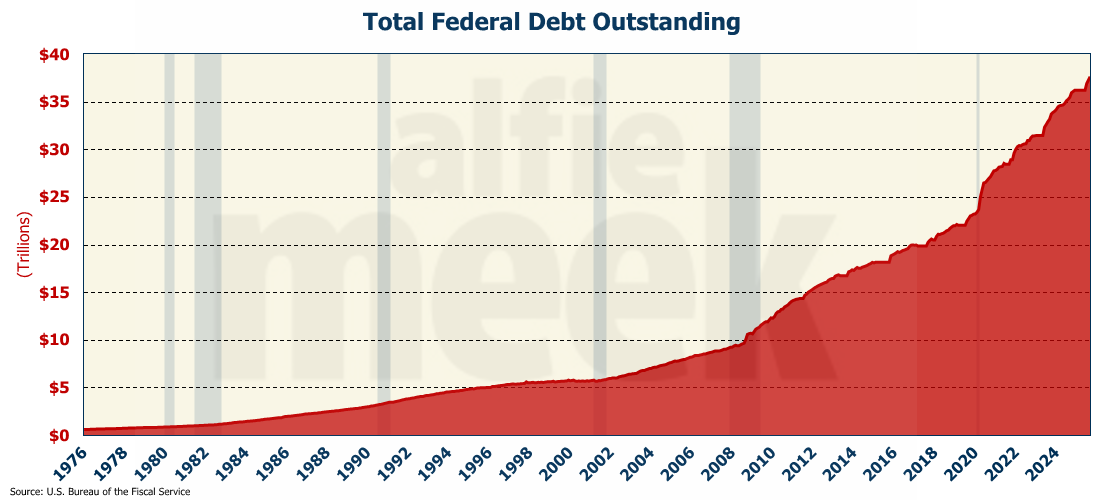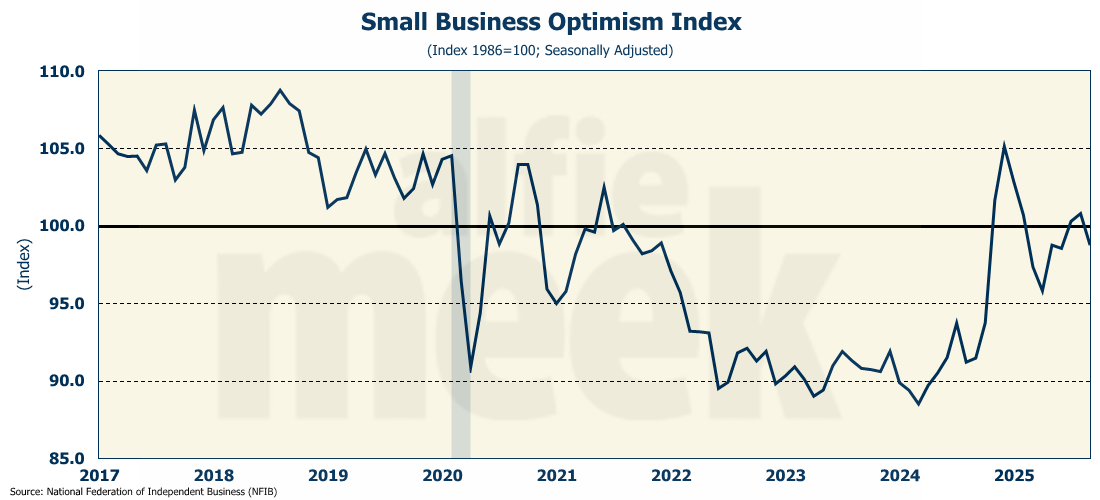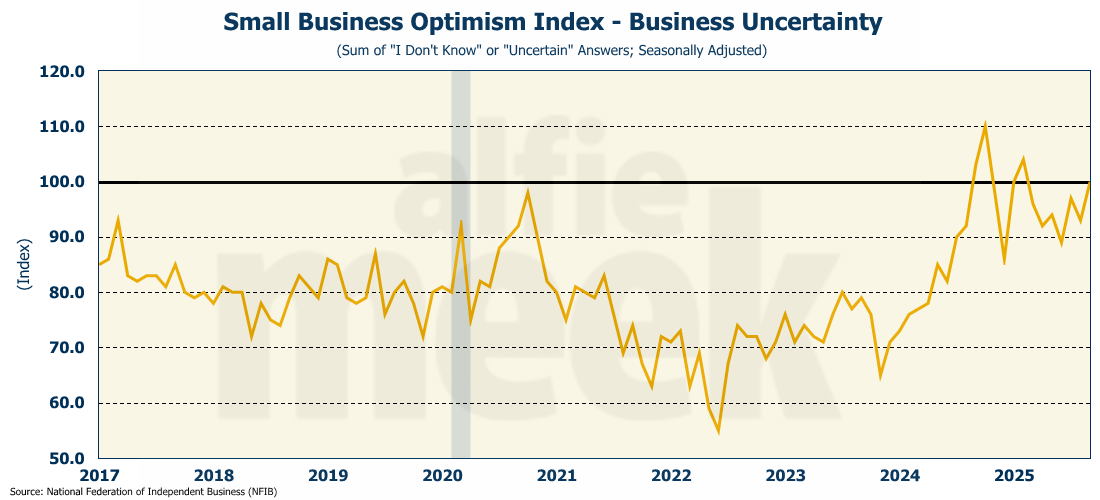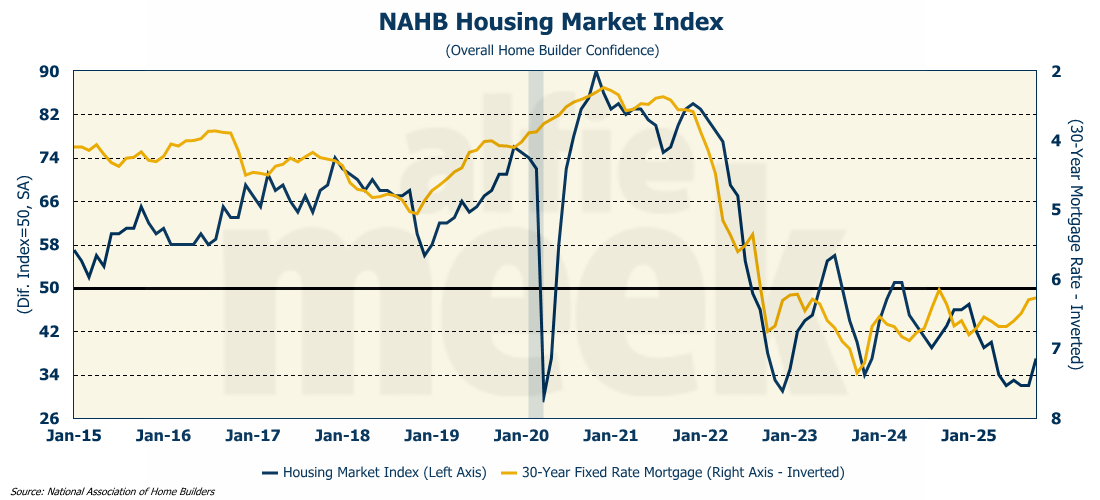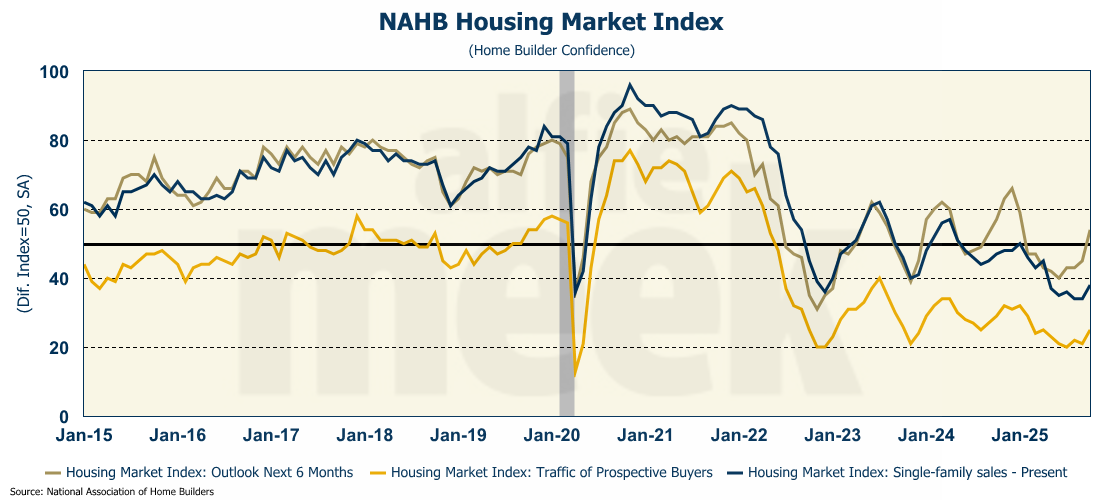Weekly Economic Update 10-17-25 Shutdown Edition #3: Small Business Optimism Index and Home Builder Confidence
Federal employees who prepare the CPI are now considered "essential."
The views and opinions expressed in this post are solely those of the author and do not necessarily reflect the views of the Georgia Institute of Technology or the Georgia Board of Regents.
The Federal government remains closed…sort of.
When I started writing this early in the week, there were rumors that some staff at the Bureau of Labor Statistics (BLS) had suddenly become “essential” and were being brought back to work to produce the Consumer Price Index. Supposedly, the Federal Reserve needs that data before they meet in two weeks. (As if the Fed really cares what the CPI says…they are cutting rates regardless.) According to an announcement on the BLS website, the September CPI will be released next Friday morning at 8:30.
But for all other government-produced economic data…the shutdown continues. So once again, this week’s Economic Update will be heavy on the commentary and a bit light on the data.
I have written many times over the past two years about our excessive Federal spending and our feckless representatives who refuse to do anything about it. And now, they are seemingly paralyzed, the government is shut down, and each side lives in their own echo chamber, believing themselves to be on the “winning side” of the issue…as if there was such a thing as a “winning side.” I suspect that the Federal government won’t be opening anytime soon.
But perhaps that’s not a bad thing. As long as the government is “shut down,” it isn’t spending money…or at least as much money. In FY 25, the obligations of the Federal government were $9.4 trillion, $6.6 trillion of which were new expenses. $1.7 trillion for Medicare. $1.5 trillion for Social Security. Another $1.5 trillion for defense. $1.2 trillion for health care. $1.2 trillion in interest. And on and on it goes.
We have a problem. And it isn’t a revenue problem. Revenue in FY 25 was $5.2 trillion. We should be able to run the constitutional functions of the Federal government on $5.2 trillion per year.
I do a lot of public speaking, and in my talks, I try to help my audience grasp the concept of a trillion dollars. I’ve shared with my readers before, but my best example is this…if you spent $1 million PER DAY since Jesus Christ was born, you would not yet have spent $1 trillion. In fact, you would only be about 3/4 of the way there.
We have a national debt of $38 trillion.
Keeping with the Biblical example, it is generally accepted among theologians that God created Adam about 4,000B.C. Using that estimate, if you spent $15 million PER DAY since God created Adam, you would not yet have spent $38 trillion. Our nation racked up that much DEBT in only 250 years. Actually, most of it was in the last 25 years.
How did that happen?
We quit teaching basic economics. We convinced people that there is such a thing as a “free lunch.” We blurred the distinction between public and private goods. Healthcare, being both rival and excludable in consumption, is a private good. Period. But somewhere along the line, we decided that it is a “basic human right” and that everyone should have it, and the government should provide and pay for it. Why stop there? Using the same logic, food (also a private good) is equally, if not more, important. Why doesn’t the government provide all of us with food? Or housing? Or transportation? “A chicken in every pot and a car in every driveway!” Hebert Hoover would be proud.
And we kept going. We don’t want older people to fall into poverty, so we created Social Security. Seemed like a good idea at the time. Most government programs do. But I’m not sure why Warren Buffett needs his monthly Social Security check at my expense. I guess he “deserves his fair share” since he paid into it. “Fair share.” That phrase alone is a big part of the problem.
But wait, there is more. Apparently, it is critically important for our government to spend hundreds of billions to make sure the Russian-speaking population of eastern Ukraine can stay in Ukraine, not to mention the extrajudicial execution of foreign nationals in international waters using multi-million dollar drones. In his farewell address in 1961, President Eisenhower warned us against the establishment of a “military-industrial complex.” He had no idea. As I have previously shown, excluding China and Russia, the U.S. spends more on defense than the next 40 countries combined, and we spend double what China and Russia spend combined!
In Wednesday’s edition of the Atlanta Journal-Constitution, there was an article about how that champion of fiscal conservatism, Marjorie Taylor Greene (MTG), wants to continue Affordable Care Act (ACA) subsidies for her constituents in northwest Georgia. Really? I would venture to bet that if you had asked MTG during her election campaign in 2020 if she supported “Obama Care,” she would have said “NO!” Reading the article, it was odd to see the Chair of the Wheeler County Republican Party essentially advocating for socialism. But that is where we are now. With 1-in-3 Americans receiving some level of government assistance, we are less a democratic republic and more of a social democracy.
Speaker Johnson stands up every day and says that he has passed a “clean CR.” Yes…a clean CR that maintains spending at levels that generate $2 trillion in annual deficits. Again, I pointed out months ago, “fiscal conservative” is no longer a thing in Washington. Today, I’ll go a step further. We don’t really have two political parties with opposing governing philosophies. We have one party, with a single political philosophy - socialism - and they occasionally have minor internal squabbles amongst themselves over how much socialism we need. Marjorie Taylor Greene wants just a little socialism. Alexandria Ocasio-Cortez (AOC) wants a whole lot of socialism. But let’s be very clear…they are both socialists. The difference is simply a matter of degree.
Now to the data…
Small Business Optimism
On Tuesday, the National Federation of Independent Business (NFIB) released its Small Business Optimism Index for September (full release here). The index once again dropped below 50 as small businesses expressed less optimism about the economy and increased concern about their excess inventory.
Further, the level of uncertainty rose among small businesses in September, rising to the fourth-highest level ever. For about 14% of small businesses, inflation was the biggest concern, and that number is rising. (But wait!…the Fed keeps telling inflation is no longer a thing…I guess small business owners know better.) About one-third of small businesses plan to raise prices in the next three months, also up significantly from last month.
Home Builder Confidence
In a bit of a surprise move, home builder confidence, which had been flirting with COVID-era lows, jumped 5 points in October to the highest level since April (full release here). The index typically moves in tandem with the inverse of the mortgage rate, but in recent months, it has not responded to the drop in the 30-year rate toward 6%.
However, in October, it moved up considerably, driven in large part by an improvement in the outlook for home sales over the next six months. In fact, for the first time since January, more builders had a positive view of the six-month outlook than had a negative view (i.e., the diffusion index was above 50).
Even so, the overall housing market remains challenging for builders, with 38% reporting cutting prices, with the average price reduction rising to 6% in October. The last time builders reported cutting prices by 6% was late 2024.
One More Thing…
I added three new paid subscribers this week! Thank you!
Starting later this month and in early November, I plan to reach out to all my paid subscribers via email to let you know how I plan to make the transition to a paid-only model in January. Currently, all paid memberships are through the “Buy Me A Coffee” site, and they will need to be moved to SubStack. I’ll let you know how to do that and when I will be turning off the “Buy Me A Coffee” memberships, so you will no longer be charged. Please be on the lookout for that e-mail. It will likely come from blog@alfie.com.
Also, for any of you who have already made a “pledge” on the SubStack site, when I turn “paid subscriptions” on in early January, those pledges will instantly execute. Please review your pledge and make sure you still want to move forward at that level.
If you do not yet have a paid subscription but would like to support this effort, please make a pledge on the SubStack app. If you would like to simply offer one-time support, you can still do that by clicking/scanning the QR code below.


